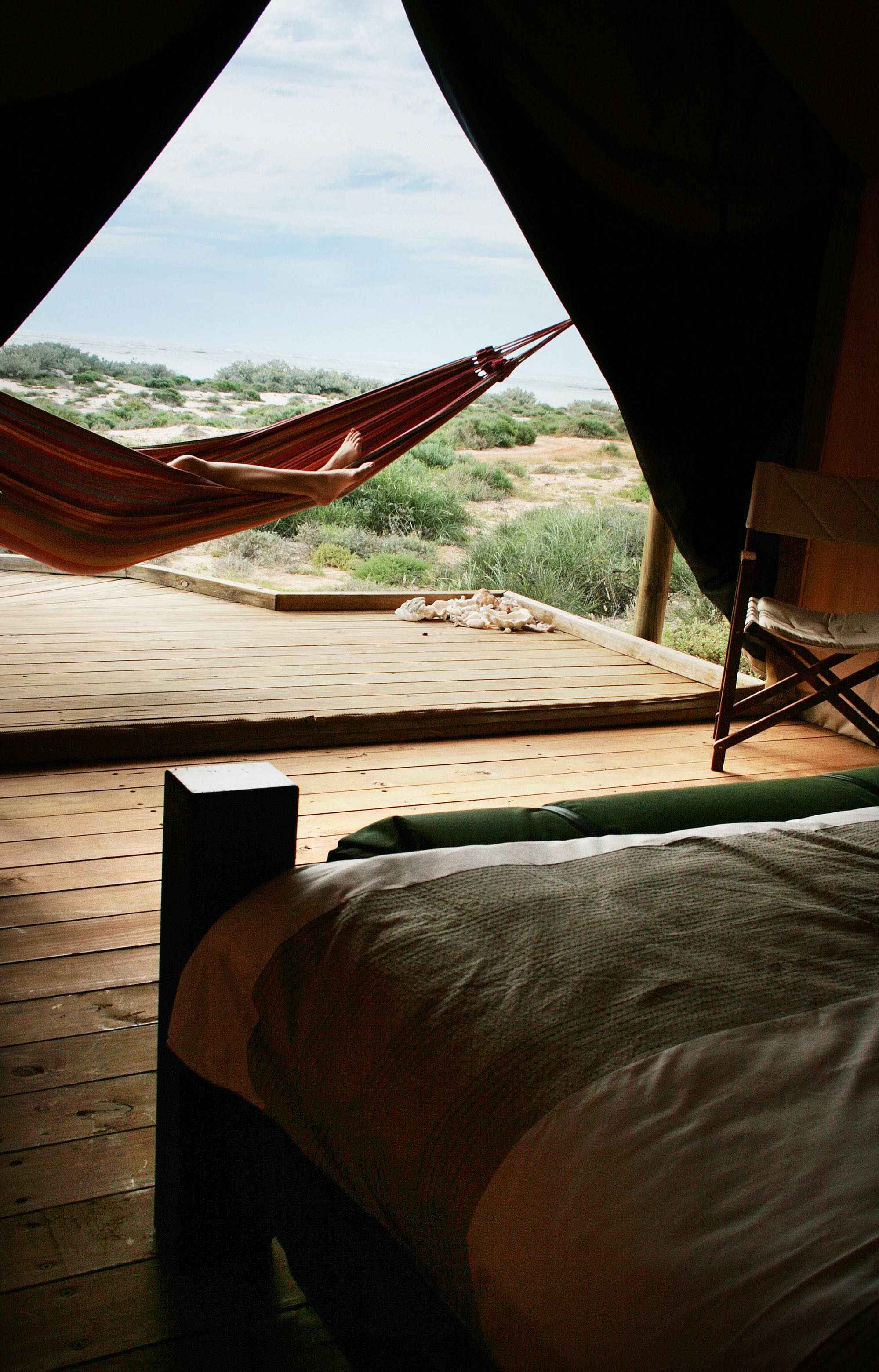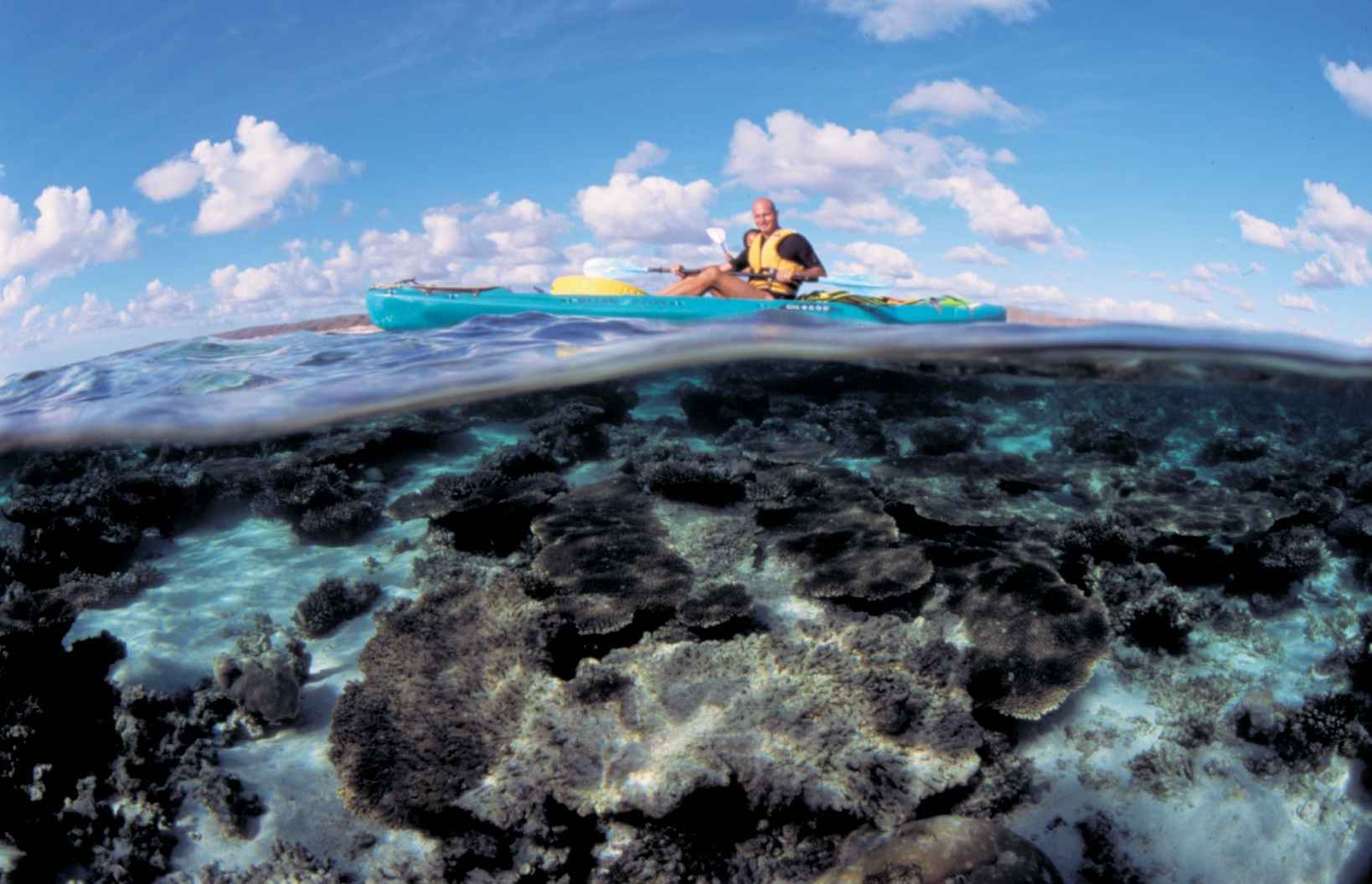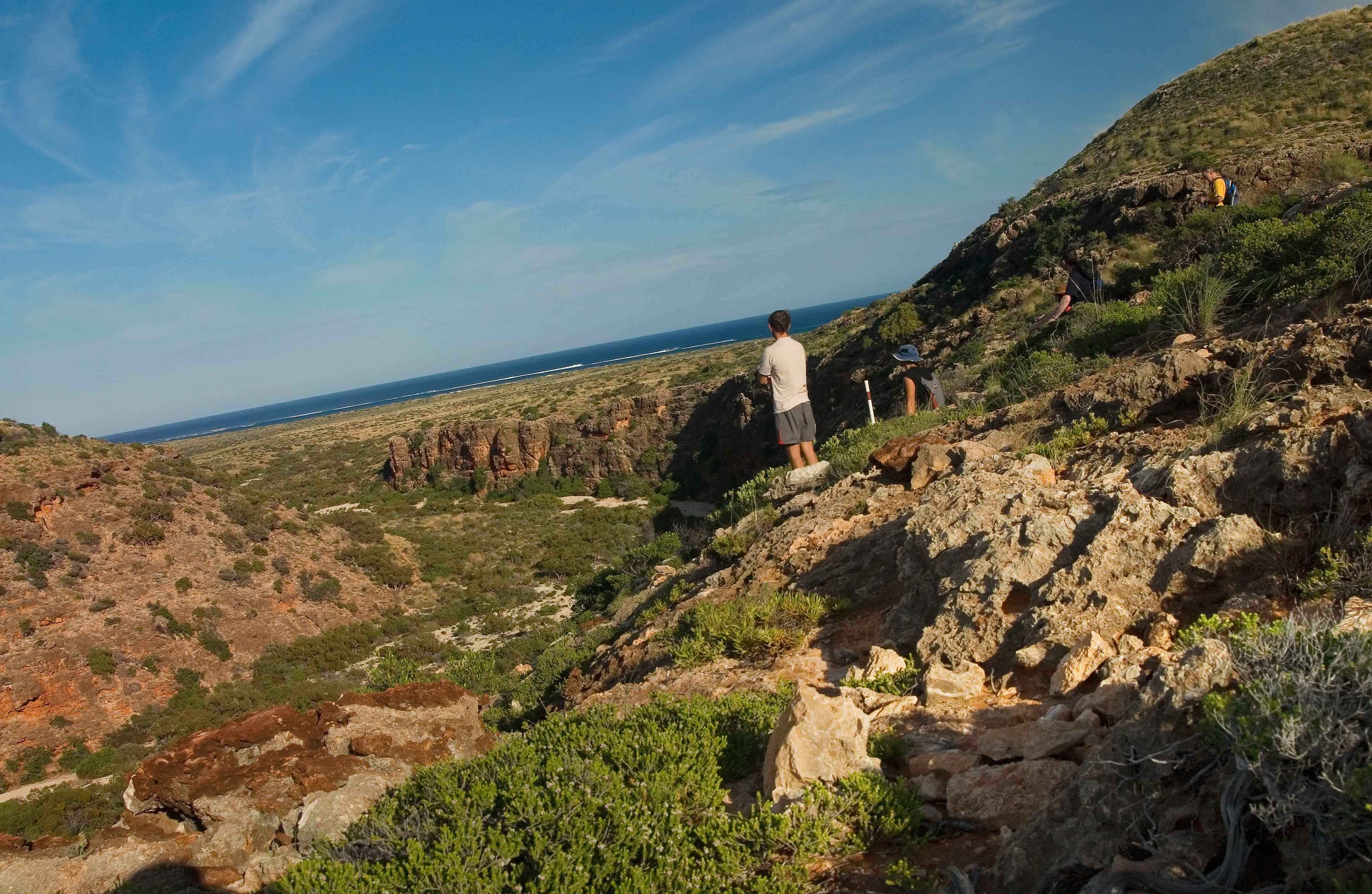Where the outback meets the reef... With just fourteen wilderness tents and one honeymoon tent hidden amongst the dunes overlooking Ningaloo Reef, Sal Salis provides a unique place from which to explore Western Australia’s coral coast and one of Australia’s best kept natural secrets.
This is the best place in the world to swim with Whale Sharks (Apr-Jun). The attraction lies in the coral reef, just a few meters off shore, and its colorful corals and marine residents. Ningaloo is also acknowledged as the best place in the world to swim with the world’s largest fish, the Whale Shark, as these gentle giants migrate through every year. From August 2016, swimming with humpback whales will also be a highlight for guests at Sal Salis. The coastal dunes and gorges in the Cape Range National Park provide a prolific terrestrial wildlife experience with red kangaroo, wallaroos, echidnas, emus and more seen in and around the camp.
Sal Salis brings a touch of style to a remote and spectacularly beautiful wilderness region, but the true luxury of Sal Salis is the chance to reconnect with nature and escape from the everyday. Safari guides are on hand to provide an immersive wilderness experience, and the ritual of sundowners is a time of laughter, sharing of exceptional local knowledge and wonder at the inimitability of Ningaloo. The resident chef ensures this is supported by the very best of Australian bush cuisine and a selection of fine Western Australian wines. The camp’s environmental credentials ensure a minimal footprint in this pristine environment. Sal Salis does not offer traditional luxury, rather the luxury is in the experience.
The focus at Sal Salis is the surrounding wilderness and its marine and land inhabitants. The tented accommodation is designed to meld with the sights and sounds of the bush outside the tents... a red kangaroo grazing amongst the dunes, the beautiful song of a Butcherbird or the slap of a humpback whale breaching just beyond the reef. At the same time, however, the camp team ensure you are very well looked after and key creature comforts are provided. This is after all, camping in style.
Each of the fifteen spacious wilderness tents and the honeymoon tent are raised on platforms that allow the coastal breezes to naturally cool the rooms. The en suite bathroom at the rear of the tent has a rustic and ecological simplicity to fit the surrounding environment. Composting loos and limited shower water per day ensure water usage is carefully and sparingly managed; an important consideration in this semi-arid habitat. The supremely comfortable king and twin beds are made up with top quality bed linen. A third person can be accommodated in a swag bed - the traditional bed roll of the Australian bushman, these are the deluxe version and are very comfortable, particularly for younger travelers.
The camp is primarily solar powered and there is no air-conditioning, mini bar, television or modern appliance in the tents – the focus is on the surrounding wilderness and the opportunity to reconnect with nature. Rates are inclusive of all meals, beverages, and all guided activities. Children aged 5 years and older are welcome. Sal Salis is usually closed from the end of October to mid-March.
Stretching for 280 kms along Australia’s west coast Ningaloo Reef is one of the world’s longest fringing coastal reefs. Isolated by distance and a rugged arid hinterland, the vibrancy of the marine life, as soon as you dip below the surface of the water, is exhilarating. Untouched by coastal degradation or pollution Ningaloo is arguably the best preserved reef complex in the world and it lies just a few meter offshore.
Snorkeling the Reef & Whale Sharks!
Each year the marine spectacle is enhanced by the arrival of the world’s biggest fish, the Whale Shark, on its migration northwards and Ningaloo is recognized as the best place in Australia to swim with these gentle giants of the ocean. The sight of a Humpback Whale breaching the surface just beyond the breakers of the reef is another unforgettable spectacle from the comfort of the camp. From August 2016, swimming with Humpback Whales will also be a highlight for guests at Sal Salis.
Hiking & Beachcombing
On shore the hinterland in the Cape Range National Park is dominated by a limestone spine that is dissected by deep rugged gorges that host a surprising variety and quantity of mammals. Euros (wallaroos), Red Kangaroos and emus are all regular sightings in camp.
The sun and tide set the pace at Sal Salis. At high tide take gentle stroll up the beach, dodging Soldier Crabs, before drift snorkeling back along the inner edge of the reef. Or kayak out to the Blue Lagoon, a 5 metre deep natural aquarium where huge schools of fish, reef sharks and turtles swim amongst the coral formations. Ningaloo is a major breeding ground for Hawksbill, Loggerhead and Green Turtles, which lay their eggs on the beach at night. Between April and June, the ultimate experience comes with swimming with the Whale Sharks on their northward migration.
Cultural & Wildlife
At sunrise take a guided walk up Mandu Mandu gorge to spot an elusive Black-footed Rock Wallaby and learn of the region’s ancient geological and Aboriginal history. At sunset sit back on the dunes behind camp with a glass of chilled wine and watch the last rays of light disappear over the Indian Ocean.
By Air - The nearest commercial airport to Sal Salis is Exmouth's Learmonth Airport. Qantas flies to Exmouth daily from Perth. The team at Sal Salis will collect you from Learmonth Airport, please pre-book these transfers.
By Road - The drive from Exmouth town to Sal Salis takes one hour - and most of this is on a good, council maintained gravel road. The drive from Learmonth Airport to Sal Salis takes 1 hour 30 minutes. Several major hire car companies offer hire cars in Exmouth, check out website www.vroomvroomvroom.com.au for pricing. The drive from Perth will take as much as 13 hours. Please note, the camp is not sign posted and you will need directions, these will be sent when you make a booking. There is a 'no drive after dark' policy within the Cape Range National Park due to the high numbers of wildlife on the road during this time.